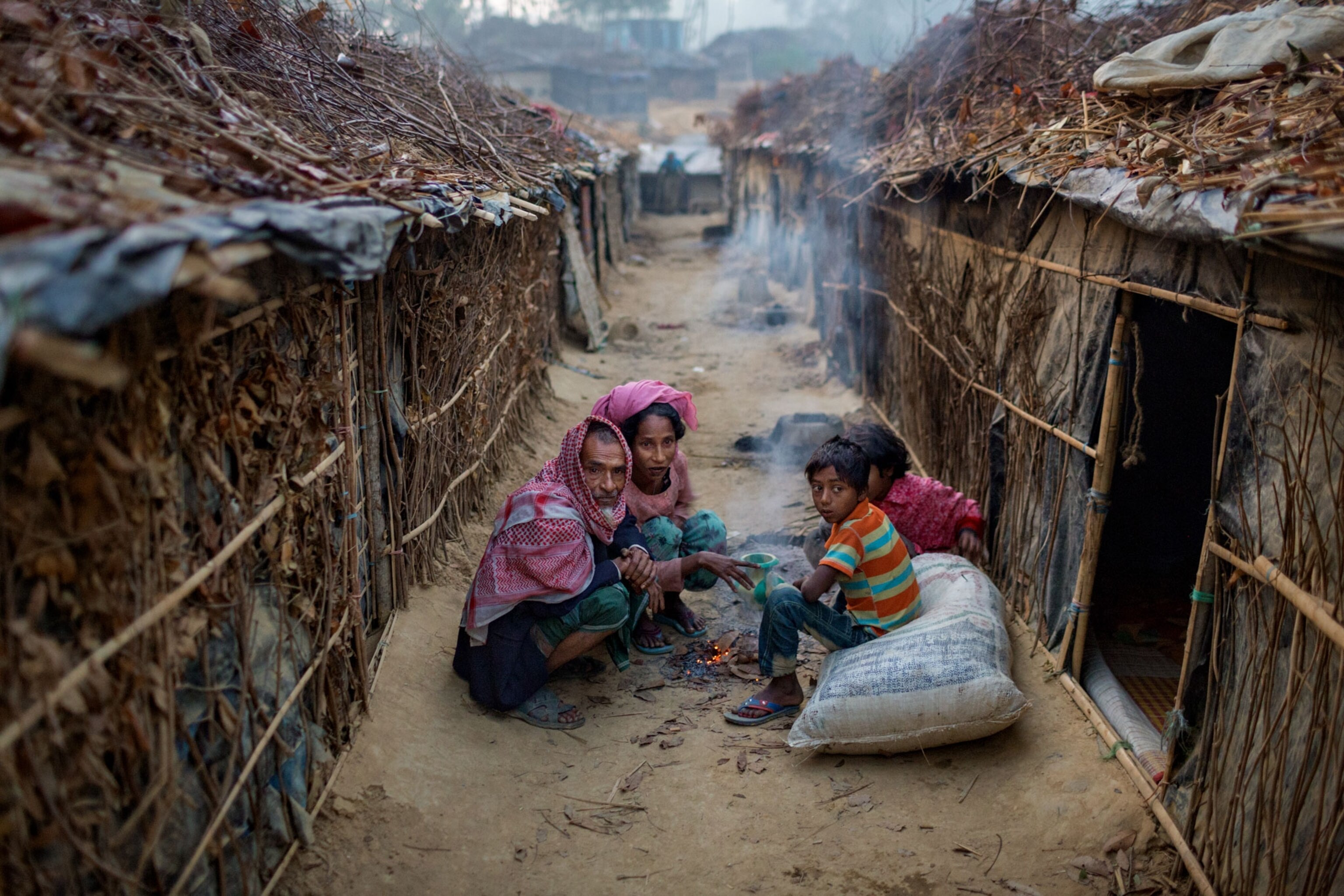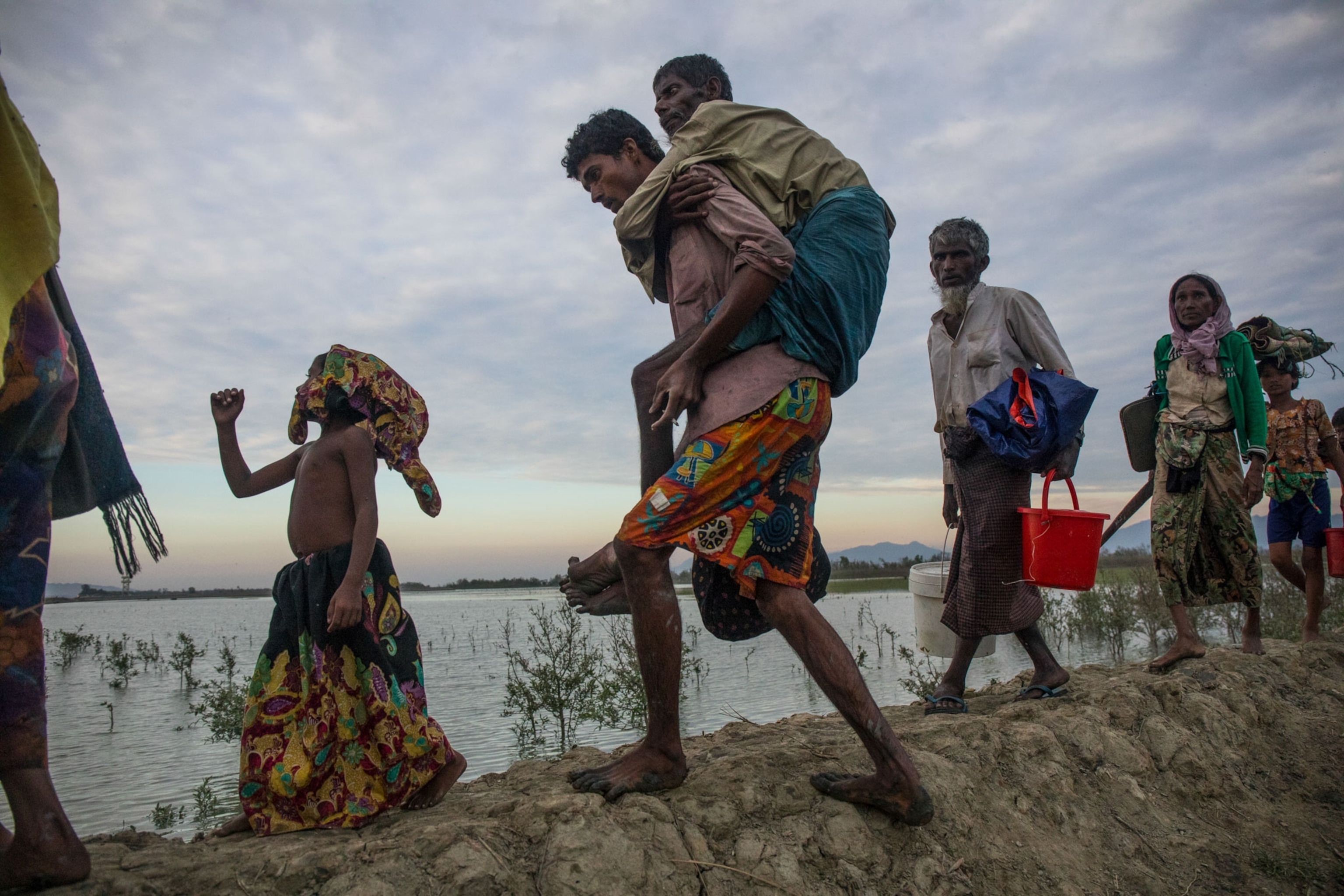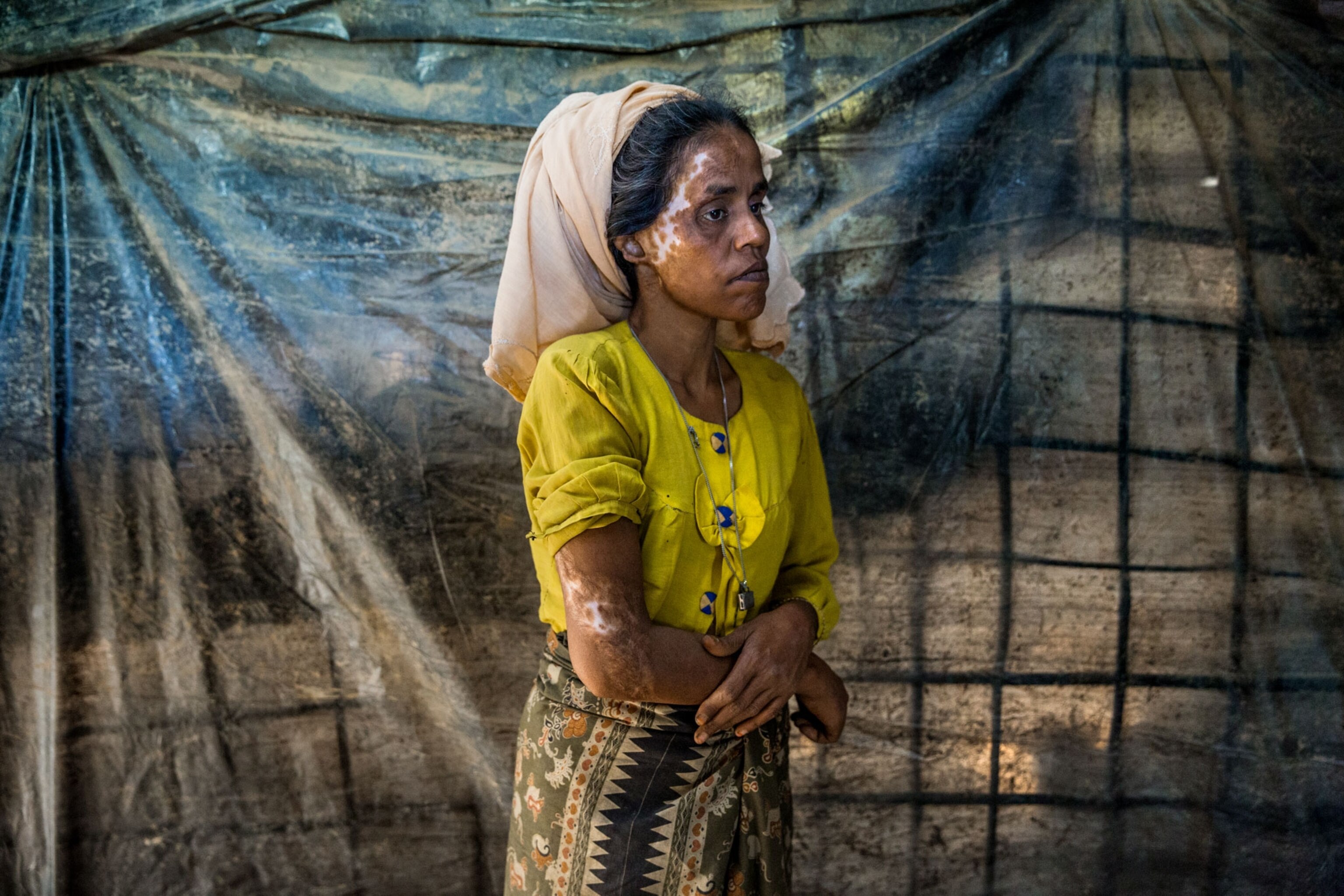The Rohingya people are an ethnic group from Myanmar, once called Burma. Most live in Rakhine State on Myanmar’s western coast.
Myanmar is a majority-Buddhist state, but the Rohingya people are primarily Muslim, though a small number are Hindu. The ethnic minority is considered “the most persecuted minority in the world” by the United Nations.
The story of that persecution has its roots in Britain’s colonization of Burma, and modern-day Myanmar’s refusal to recognize the existence of a people who have existed for thousands of years.
Coming to Burma
Muslim settlers came to Arakan State, an independent coastal kingdom in what is now Myanmar, starting in the 1430s, and a small Muslim population lived in Arakan State when it was conquered by the Burmese Empire in 1784. Burma in turn was conquered by Britain in 1824, and until 1948 Britain ruled Burma as part of British India. During that time, other Muslims from Bengal entered Burma as migrant workers, tripling the country’s Muslim population over a 40-year period. But though Muslims had lived in Burma for centuries, and though Britain promised the Rohingya an autonomous state in exchange for their help in WWII, it never followed through, and the Burmese people resented what they saw as an incursion of uninvited workers.
Myanmar gained its independence from Britain in 1948. The government didn’t provide for a Muslim state, either. Nor did it acknowledge the Rohingya—a name adopted by a group of the descendants of both Arakan State Muslims and later migrants to Burma. Instead Myanmar worked to cast out the Rohingya people, excluding them from its constitution. In 1982, Myanmar passed a citizenship law that denied the Rohingya people citizenship, too.
No rights
As non-citizens, Rohingya people lack basic rights within Myanmar and are considered stateless. Though Myanmar recognizes 135 distinct ethnic groups, the Rohingya are not one of them. Myanmar refuses to recognize the term as one that refers to the region’s Muslim minority.
When Myanmar became a military state in 1962, the Rohingya became victims of state-sponsored persecution. During “Operation King Dragon,” Burmese military forces targeted the Rohingya people, and were accused of human rights abuses including rape, destruction of houses and villages, and mass arrests. Rohingya people began fleeing to nearby Bangladesh in huge numbers. Another targeted campaign, “Operation Clean and Beautiful Nation,” pushed another 200,000 people out of the country.
Today, the Rohingya are considered illegal immigrants by Myanmar, and are not recognized under the law. Rohingya people cannot access social services or education, and their movement outside of Rakhine State is closely restricted. Myanmar has also imposed strict regulations on birth control and marriage, only allowing Rohingya in some townships in Rakhine State to have two children and restricting the marriages of some Rohingya.
Resist or flee
Some Rohingya people have put up violent resistance. In 2017, a group of Rohingya militants attacked the Myanmar army, sparking another wave of anti-Rohingya persecution. A huge wave of Rohingya people began fleeing the violence in summer 2017, going to nearby Bangladesh.
Before the 2017 crisis, an estimated 1 million Rohingya people lived in Burma. As of August 2018, over 723,000 Rohingya refugees had fled to Bangladesh. Many settled in the Kutupalong refugee settlement, now the world’s largest. The massive camp has stretched humanitarian aid and is particularly vulnerable to monsoon rains. UNHCR, the UN refugee agency, estimates that 200,000 Rohingya refugees are at risk during monsoon season, which can create landslides and floods in the camp.
Amnesty International has said Myanmar is trapping those Rohingya who are left in Myanmar in a “dehumanizing apartheid regime,” and the UN has accused Myanmar of ethnic cleansing.
Related Topics
You May Also Like
Go Further
Animals
-
How can we protect grizzlies from their biggest threat—trains?How can we protect grizzlies from their biggest threat—trains?
-
This ‘saber-toothed’ salmon wasn’t quite what we thoughtThis ‘saber-toothed’ salmon wasn’t quite what we thought
-
Why this rhino-zebra friendship makes perfect senseWhy this rhino-zebra friendship makes perfect sense
-
When did bioluminescence evolve? It’s older than we thought.When did bioluminescence evolve? It’s older than we thought.
-
Soy, skim … spider. Are any of these technically milk?Soy, skim … spider. Are any of these technically milk?
Environment
-
Are the Great Lakes the key to solving America’s emissions conundrum?Are the Great Lakes the key to solving America’s emissions conundrum?
-
The world’s historic sites face climate change. Can Petra lead the way?The world’s historic sites face climate change. Can Petra lead the way?
-
This pristine piece of the Amazon shows nature’s resilienceThis pristine piece of the Amazon shows nature’s resilience
-
Listen to 30 years of climate change transformed into haunting musicListen to 30 years of climate change transformed into haunting music
History & Culture
-
Meet the original members of the tortured poets departmentMeet the original members of the tortured poets department
-
Séances at the White House? Why these first ladies turned to the occultSéances at the White House? Why these first ladies turned to the occult
-
Gambling is everywhere now. When is that a problem?Gambling is everywhere now. When is that a problem?
-
Beauty is pain—at least it was in 17th-century SpainBeauty is pain—at least it was in 17th-century Spain
Science
-
Here's how astronomers found one of the rarest phenomenons in spaceHere's how astronomers found one of the rarest phenomenons in space
-
Not an extrovert or introvert? There’s a word for that.Not an extrovert or introvert? There’s a word for that.
-
NASA has a plan to clean up space junk—but is going green enough?NASA has a plan to clean up space junk—but is going green enough?
-
Soy, skim … spider. Are any of these technically milk?Soy, skim … spider. Are any of these technically milk?
Travel
-
Could Mexico's Chepe Express be the ultimate slow rail adventure?Could Mexico's Chepe Express be the ultimate slow rail adventure?
-
What it's like to hike the Camino del Mayab in MexicoWhat it's like to hike the Camino del Mayab in Mexico












